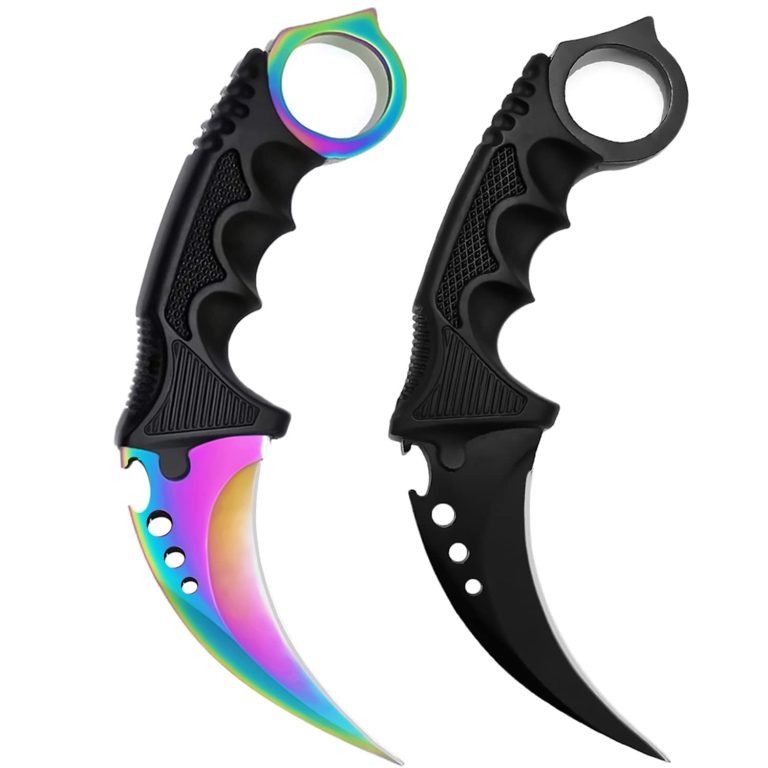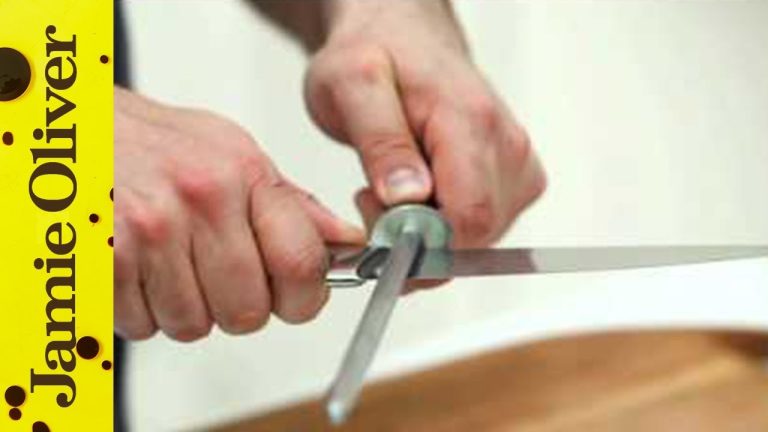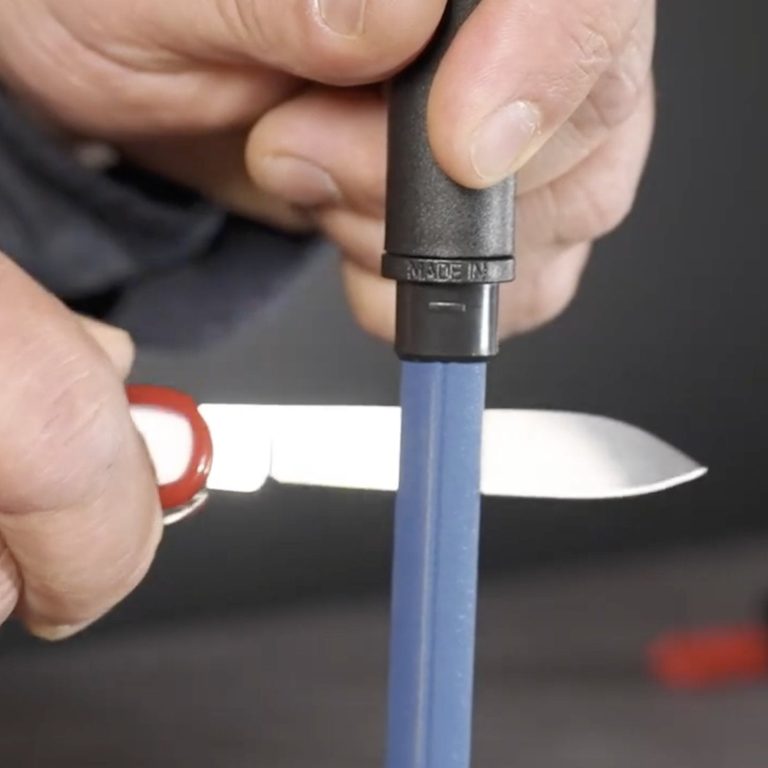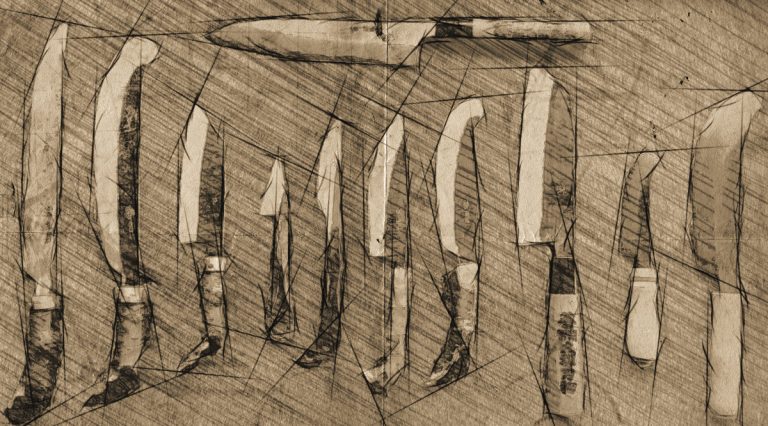Safety Protocols When Handling Doctors Knives in Surgery
Safety protocols when handling doctors knives in surgery include wearing protective gloves and using proper handling techniques to prevent accidents and ensure patient safety. When it comes to surgical procedures, it is crucial for medical professionals to follow strict safety guidelines to minimize the risk of injuries and infections.
Proper handling of doctors knives, such as wearing gloves and using the right grip, is essential to maintain a sterile environment and prevent accidents during surgery. These safety protocols not only protect the surgical team but also contribute to the overall success and well-being of the patient.
Importance Of Safety Protocols
Safety protocols are of utmost importance when handling doctors knives during surgery. Implementing these measures ensures the well-being of both medical professionals and patients.
It is crucial for surgical teams to follow strict safety protocols when handling doctors’ knives during surgery. Mishandling these sharp instruments can lead to serious accidents and jeopardize the safety of both patients and medical professionals. In this blog post, we will explore the importance of safety protocols in surgical settings and highlight the dangers of mishandling doctors’ knives.
Additionally, we will discuss ways to reduce the risk of accidents and how to maintain a safe surgical environment.
Dangers Of Mishandling Doctors’ Knives
Mishandling doctors’ knives during surgery can have severe consequences. Here are some of the dangers associated with improper handling:
- Accidental cuts and lacerations: Improper grip or uncontrollable movements may result in unintended cuts or lacerations, causing significant harm to patients or medical staff.
- Infections and contamination: Mishandling instruments can lead to cross-contamination, increasing the risk of infections and compromising the patient’s recovery process.
- Tissue damage: Careless handling may cause unnecessary tissue trauma, prolonging the healing process and potentially impacting the overall outcome of the surgery.
Reducing The Risk Of Accidents
To minimize the chances of accidents during surgery, strict safety protocols must be followed. Here are key measures to reduce the risk:
- Proper training and education: Surgeons, nurses, and other healthcare professionals involved in surgeries should receive comprehensive training on the correct handling of doctors’ knives and adhere to the best practices.
- Appropriate instrument selection and maintenance: Ensuring that the instruments are in good working condition, sterilized, and properly maintained reduces the risk of mishaps during surgery.
- Enhanced focus and coordination: Surgeons and their teams must maintain high levels of concentration and coordination throughout the procedure to prevent errors and minimize the likelihood of accidents.
Maintaining A Safe Surgical Environment
Creating a safe surgical environment is crucial for optimal patient outcomes. Here are some essential factors to consider:
- Adequate lighting: Sufficient and appropriate lighting in the operating room minimizes the chances of accidental injuries caused by poor visibility.
- Proper ergonomics: Surgeons should have access to ergonomic equipment and workstations to reduce the risk of strain, fatigue, and potential errors.
- Strict infection control measures: Implementing and following strict infection control protocols, including proper hand hygiene, disinfection, and aseptic techniques, is vital to prevent surgical site infections and maintain patient safety.
By prioritizing safety protocols when handling doctors’ knives in surgery, healthcare professionals can significantly mitigate risks and ensure the well-being of both the surgical team and patients. Remember, adherence to safety measures and ongoing training is key to maintaining a safe surgical environment.
Personal Protective Equipment (Ppe)
Personal Protective Equipment (PPE) is essential for safely handling doctors knives in surgery. By wearing PPE, such as gloves, masks, and gowns, healthcare professionals can minimize the risk of infection and ensure a safe surgical environment for both themselves and their patients.
When it comes to handling doctor’s knives in surgery, personal protective equipment (PPE) plays a vital role in ensuring the safety of both healthcare professionals and patients. In this section, we will discuss the proper use of gloves, wearing gowns and masks, as well as eye protection and face shields.
Proper Use Of Gloves
Gloves are an essential part of PPE in surgical settings. Here’s how to use them effectively:
- Always ensure that gloves are the appropriate size and fit snugly on your hands to maximize dexterity and prevent slippage.
- Wash and dry your hands thoroughly before putting on gloves to maintain proper hygiene.
- Make sure to inspect gloves for any signs of damage or punctures before wearing them.
- When removing gloves, peel them off from the cuff without touching the outer surface to avoid contamination.
- Dispose of used gloves in designated waste containers promptly.
Wearing Gowns And Masks
In addition to gloves, wearing gowns and masks is crucial to protect against potential risks during surgery. Here are some key points to consider:
- Gowns should cover your entire body, from your neck down to your knees, and should have long sleeves to ensure maximum coverage.
- Ensure that gowns are secured at the neck and waist to prevent any accidental exposure to contaminants.
- Masks should completely cover your mouth and nose, providing a barrier against airborne particles and respiratory droplets.
- It is important to replace masks regularly to maintain their effectiveness.
- Remember to perform proper hand hygiene before and after wearing gowns and masks.
Eye Protection And Face Shields
Safeguarding your eyes and face is vital when handling doctor’s knives. Take note of these precautions:
- Wear safety goggles or eyewear that provides adequate eye protection against splashes, debris, and potentially harmful fluids.
- Face shields should be used in addition to goggles for an extra layer of protection for the face, especially in high-risk procedures.
- Properly clean and disinfect eye protection and face shields after each use to prevent the spread of infection.
By following these safety protocols and using the appropriate personal protective equipment, healthcare professionals can minimize the risk of injuries and ensure a safe surgical environment for all parties involved. Remember to prioritize your safety and that of your patients at all times.
Proper Knife Handling Techniques
Learn the essential safety protocols for handling doctor’s knives in surgery, ensuring the well-being of both patients and medical professionals. Master proper knife handling techniques to minimize the risk of accidents and maintain a safe surgical environment.
When it comes to surgical procedures, safety protocols must be followed meticulously to ensure the well-being of both the patient and the medical staff involved. Proper knife handling techniques play a crucial role in minimizing the risks associated with surgical procedures.
In this section, we will discuss three essential aspects of knife handling in surgery: grip and control, avoiding excessive force, and the use of restraints and clamps.
Grip And Control
- Maintaining a proper grip on the surgical knife is essential to ensure precision and control throughout the procedure.
- Hold the knife with a firm but relaxed grip, allowing for flexibility and ease of movement.
- Position your fingers securely around the handle, ensuring that the index finger rests near the blade for enhanced control.
- Avoid gripping the knife too tightly, as this can lead to muscle fatigue and decreased dexterity.
- Practice proper hand positioning and posture to maintain stability and reduce the risk of accidental slips or injuries.
Avoiding Excessive Force
- Applying excessive force when using a surgical knife can increase the likelihood of unintended tissue damage and complications.
- Allow the sharpness of the blade to do most of the work, using minimal force during incisions.
- Maintain a steady and controlled movement, avoiding sudden jerks or motions that could lead to unintended injuries.
- Regularly check the sharpness of the knife and replace it whenever necessary to ensure optimal efficiency and minimize the need for excessive pressure.
- Proper training and technique are vital in developing the skill to perform surgical procedures with precision and finesse, reducing the reliance on force.
Use Of Restraints And Clamps
- In certain surgeries, the use of restraints and clamps on tissue can enhance safety and provide better visibility during procedures.
- Restraints can help secure tissue or organs out of the way, minimizing the risk of accidental cuts or injuries.
- Clamps can be used to hold tissue or blood vessels, allowing for more controlled and accurate incisions.
- Proper placement and adjustment of restraints and clamps should be performed with caution, taking care not to impede blood flow or cause unnecessary tissue damage.
- Regular monitoring and inspection of restraints and clamps during the procedure are essential to ensure their effectiveness and prevent any complications.
By following these proper knife handling techniques, medical professionals can significantly improve surgical safety and reduce the likelihood of adverse events. Implementing these protocols and regularly updating them based on advancements in medical technology and knowledge can ensure the highest level of patient care and outcomes.
Sterilization And Maintenance
Sterilization and maintenance are essential safety protocols when handling doctors knives during surgery. Ensuring proper cleaning, sterilization, and routine maintenance of the knives can significantly reduce the risk of infections and enhance patient safety.
Ensuring the safety of doctors and patients is paramount when it comes to handling doctors knives in surgery. Proper sterilization and maintenance protocols play a critical role in preventing infections and maintaining the effectiveness of the tools. Follow these guidelines for cleaning, inspecting, and storing knives to keep them in top condition:
Cleaning and Sterilizing Knives:
- Thoroughly clean knives after each use to remove blood, tissue, and contaminants. Use designated cleaning brushes, mild detergent, and warm water.
- Rinse the knives to remove soap residue, ensuring all cleaning agents are completely removed.
- Follow the manufacturer’s instructions for appropriate sterilization methods, such as autoclaving or using chemical solutions.
- Properly package the knives before sterilization to prevent damage during the process.
- Ensure that sterilization equipment is regularly checked for proper functioning and calibration.
Regular Inspection for Damage:
- Conduct a visual inspection of knives before and after each use. Look for any signs of damage, such as nicks, cracks, or loose screws.
- Pay close attention to the blade’s sharpness and check if it requires sharpening or replacement. Dull blades can compromise the precision and effectiveness of surgical procedures.
- Any damaged or worn-out knives should be immediately replaced to minimize the risk of accidents or infections.
Proper Storage and Handling:
- After sterilization, store knives in designated, clean, and dry areas to prevent contamination. Use dedicated storage trays or containers.
- Avoid overcrowding to prevent damage to the blades or possible contact between different knives.
- Handle knives with care, using appropriate instruments to avoid direct contact with the blade.
- Regularly train and educate staff on proper knife handling techniques and safety protocols.
By adhering to these sterilization and maintenance practices, medical professionals can contribute to safer surgical procedures and minimize the risk of infections or complications.
Communication And Teamwork
Communication and teamwork play a vital role in ensuring safety protocols are followed when handling doctors’ knives during surgery. Effective communication among surgical teams is essential to minimize the risk of accidents and ensure the safety of both the patients and medical staff.
Teamwork promotes efficiency and coordination, reducing the chances of errors and maintaining a safe surgical environment.
Effective communication and seamless teamwork are vital when handling doctors’ knives in surgery. This ensures the safety of both patients and medical professionals. By maintaining clear communication with surgeons and assistants, establishing a surgical safety checklist, and verbalizing knife-related actions, potential risks can be minimized.
Let’s explore each of these aspects in detail:
Clear Communication With Surgeons And Assistants
To ensure a smooth and safe surgical procedure, it is crucial for all team members to communicate clearly with surgeons and assistants. Here are some ways to promote effective communication:
- Maintain open lines of communication: Foster an environment where everyone feels comfortable expressing concerns, seeking clarification, and providing updates.
- Use standardized terminology: Establish a common language to facilitate accurate and efficient communication. This reduces the likelihood of misinterpretation or confusion during critical moments.
- Active listening: Actively listen to instructions and information provided by surgeons and assistants. This allows for a better understanding of the procedure and any changes that may occur.
- Respectful communication: Always maintain a professional and respectful tone when communicating with colleagues. This encourages an atmosphere of collaboration and mutual trust.
Establishing A Surgical Safety Checklist
Implementing a surgical safety checklist can significantly enhance patient safety. Here are key elements to include in the checklist:
- Preoperative briefing: Conduct a thorough discussion before the surgery to review the specific details of the procedure, including knife-related actions. This ensures that the entire team is on the same page.
- Verifying equipment and instruments: Check that the knives, scalpels, and other instruments required for the surgery are present, in good condition, and sterilized.
- Patient identification: Verify the patient’s identity to prevent any mix-ups or errors during the procedure.
- Time-out procedure: Pause before the start of surgery to reconfirm essential details, including the planned knife-related actions. This allows the team to address any concerns or potential risks.
- Postoperative debriefing: Reflect on the surgery and discuss any key learnings or areas for improvement. This promotes continuous learning and strengthens future performance.
Verbalizing Knife-Related Actions
When handling doctors’ knives in surgery, verbalizing knife-related actions can enhance safety and coordination among the team. Here’s why it is crucial:
- Improved situational awareness: By vocalizing knife-related actions, everyone involved is informed and prepared for each step. This mitigates the risk of unprecedented movements or accidental injuries.
- Clear communication of intentions: Verbalizing knife-related actions allows assistants to anticipate the surgeon’s next move, ensuring they are ready to provide the necessary support or instruments.
- Prompt response to changes: In case the surgeon’s plan deviates or needs adjustment, verbal communication ensures that all team members are aware and can adapt accordingly.
By emphasizing clear communication with surgeons and assistants, establishing a surgical safety checklist, and verbalizing knife-related actions, medical professionals create a safer and more cohesive surgical environment.
Emergency Response Procedures
Emergency response procedures for safely handling doctors’ knives in surgery are essential to ensure the well-being of medical professionals and patients. By implementing strict safety protocols, including proper training and equipment checks, hospitals and surgical teams can minimize the risk of accidents and enhance the overall surgical experience.
Safety Protocols When Handling Doctors Knives In Surgery
In a surgical setting, it is crucial to prioritize safety protocols when handling doctors’ knives. One aspect that requires special attention is emergency response procedures. Being prepared for accidents and knowing how to handle knife-related injuries can make a significant difference in the outcome.
Additionally, understanding how to contact emergency services promptly can ensure timely assistance. In this section, we will cover immediate responses to accidents, handling knife-related injuries, and contacting emergency services.
Immediate Responses To Accidents:
- Stay calm and assess the situation to ensure your safety and the safety of others.
- Activate the emergency response system to alert the surgical team of the accident.
- Apply pressure to any profusely bleeding wounds to control the bleeding.
- Provide basic first aid, such as cleaning the wound and covering it with a sterile dressing.
- Inform the surgeon immediately about the accident and assist as instructed.
Handling Knife-Related Injuries:
- Remove yourself and the injured person from immediate harm’s way, if possible.
- Determine the severity of the injury. Minor cuts and scratches may require basic first aid, while deep wounds may need additional attention.
- If the injury is severe, avoid removing the knife or any embedded objects. Stabilize the area and wait for medical professionals.
- If the knife cannot be safely removed without professional assistance, immobilize it in place by securing the affected area with dressings or splints.
- Share relevant information about the injury with medical professionals to help them provide appropriate treatment.
Contacting Emergency Services:
- While attending to the injured person, delegate the responsibility of contacting emergency services to another member of the surgical team.
- Provide accurate and concise information, including the location, description of the injury, and any other pertinent details.
- Follow the emergency dispatcher’s instructions and be prepared to provide assistance or clear the way for medical professionals if necessary.
- Ensure that someone remains at the designated entrance to guide emergency responders to the surgical suite.
- Document the details of the incident for future reference and improvements in safety protocols.
By familiarizing yourself with immediate responses to accidents, handling knife-related injuries, and contacting emergency services efficiently, you can contribute to a safer surgical environment. Remember, staying calm, following protocol, and providing prompt care are vital in these critical moments.

Credit: www.nytimes.com
Frequently Asked Questions Of Safety Protocols When Handling Doctors Knives In Surgery
How Do You Handle A Surgical Knife?
To handle a surgical knife, be cautious and attentive, following proper training and guidelines.
How Do You Handle A Scalpel Safely?
To handle a scalpel safely, follow these guidelines: 1. Hold the scalpel with a firm grip and keep your fingers away from the blade. 2. Make sure to use the scalpel in a controlled manner and avoid sudden movements. 3. Dispose of the scalpel in a sharps container immediately after use to prevent injuries.
4. Always wear appropriate personal protective equipment, such as gloves, when handling a scalpel.
Which Precaution Should Be Considered To Prevent Injury When Using Sharp Scalpels?
To prevent injury when using sharp scalpels, follow these precautions:1. Always handle the scalpel with care and avoid touching the blade. 2. Use a cutting mat or designated surface to protect yourself and others from accidental cuts. 3. Make sure to keep your fingers and other body parts away from the blade while cutting.
4. Dispose of used scalpels properly in a sharps container to prevent accidental injuries.
What Is A Knife A Doctor Uses During An Operation Called?
The knife a doctor uses during an operation is called a surgical knife.
Conclusion
To ensure the safety of both doctors and patients during surgery, it is crucial to follow proper safety protocols when handling surgical knives. By implementing these guidelines, the risk of accidents and injuries can be significantly reduced. First and foremost, thorough training should be provided to all surgical staff on the correct handling and disposal of knives.
It is essential to always use the appropriate knife for each specific procedure to minimize the chance of complications. Additionally, maintaining a sterile environment and adhering to proper hand hygiene practices is essential to prevent infections. Regular inspection and maintenance of surgical knives is also critical to ensure their sharpness and functionality.
Lastly, implementing a system for reporting and investigating any knife-related incidents can help identify potential areas for improvement and prevent future incidents. By following these safety protocols, surgeons and healthcare facilities can prioritize the well-being of their patients and create a safer surgical environment.







Brilliant idea
Thank you